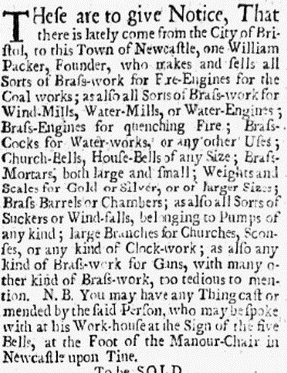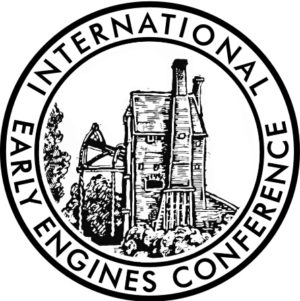
Research Snippets – On Brass cylinders
Dr John Kanefsky writes:
In my paper to IEEC2 on the Norris Files, I referred briefly to the paucity of evidence about brass cylinders for Newcomen engines [Kanefsky (2021), Coalbrookdale, Cornwall and Cylinders, pp.6-7 – see also early access version].
However, an advertisement in the Newcastle Courant for 3rd April 1725 sheds a little light. In it, a Mr William Packer of Bristol who has relocated to Newcastle offers to cast, among a wide variety of other items, “all Sorts of Brass-work for Fire-Engines for the Coal Works”.

Little is known about Packer. From a brief search on the internet it appears he as active as a bell-founder and supplier of candelabra in the period before his move and was probably a relative of John Packer, another bell-founder of Bristol who was active in the late seventeenth and early eighteenth centuries.
Church bells could be cast in similar sizes and weights to engine cylinders, so it is hardly surprising that an established brass founder would add the latter to his list of products. What is less clear is why he moved to Newcastle. Bristol and London were the main centres of brass-founding, indeed Abraham Darby was a brassfounder himself before moving from Bristol to Shropshire, and the Goldneys had links with the north-east. It would be surprising if these three men were not well known to each other. And at least a dozen Newcomen engines had been erected or planned in the northeastern coalfield by 1725; the first known Coalbrookdale cylinder supplied there was not despatched until 1727.
He was not the only brass founder in the locality, however. A year earlier, the Courant had on 2nd May 1724 posted a similar advert, which specified mainly smaller items but mentioned “Ingine-Work”:

I have found even less about him, and the advert is silent as to where he had been before moving to Gateshead, but a brass founder by that name, perhaps the same man, lived in York in the 1730s.
We will probably never find out any corroborating detail of the business of either of these men, but these advertisements are potentially a tantalising glimpse into the background of the early Newcomen engine.
John Kanefsky


